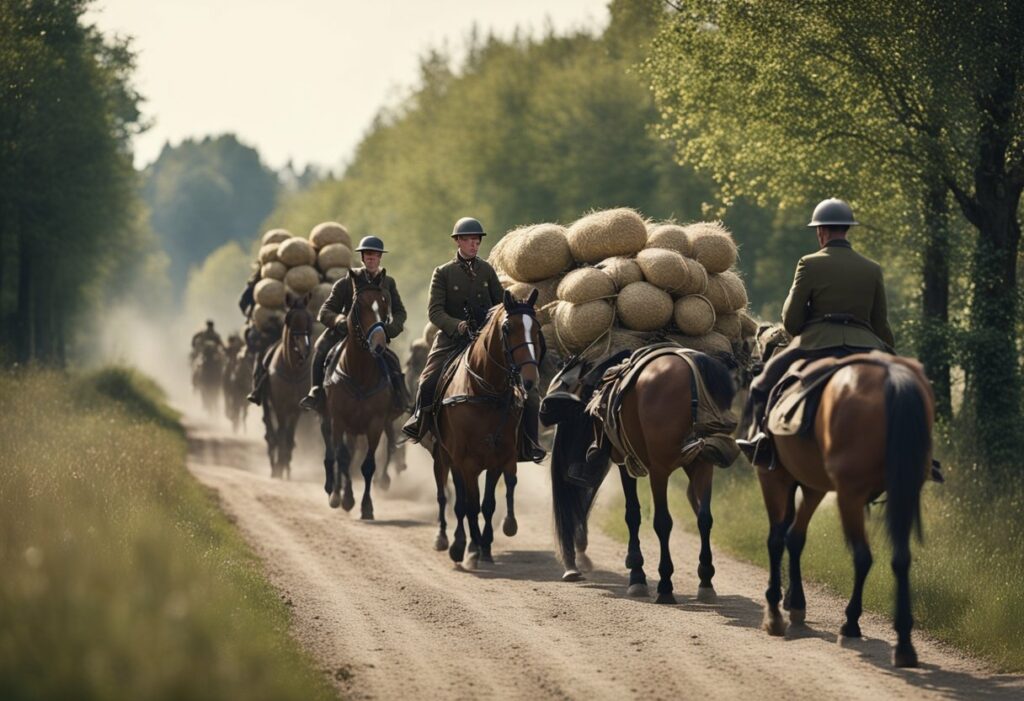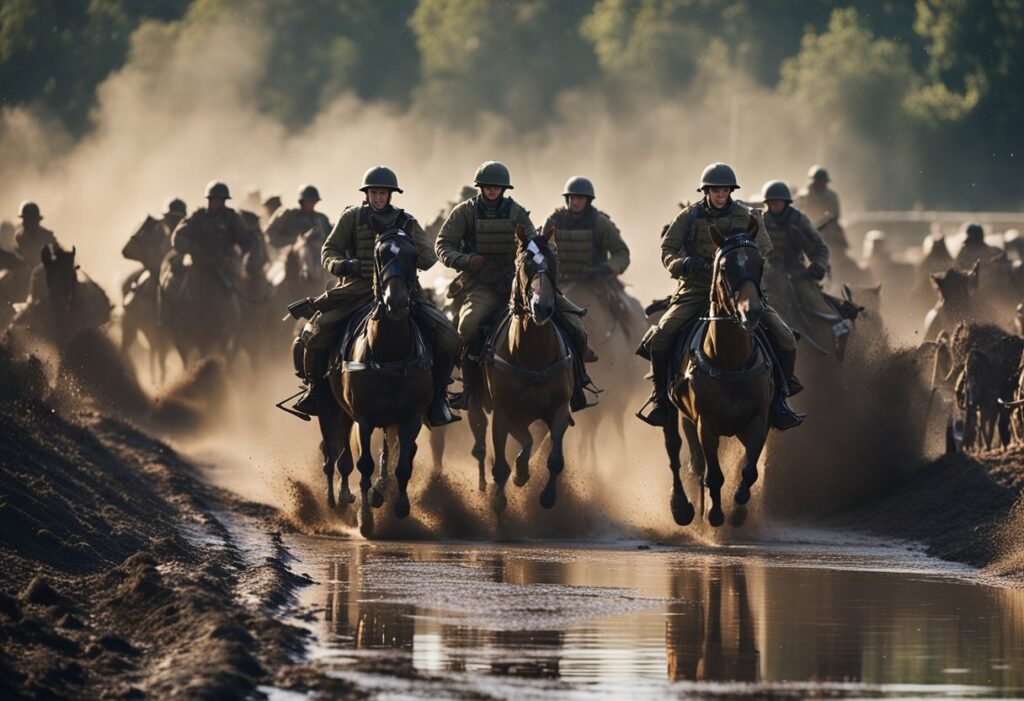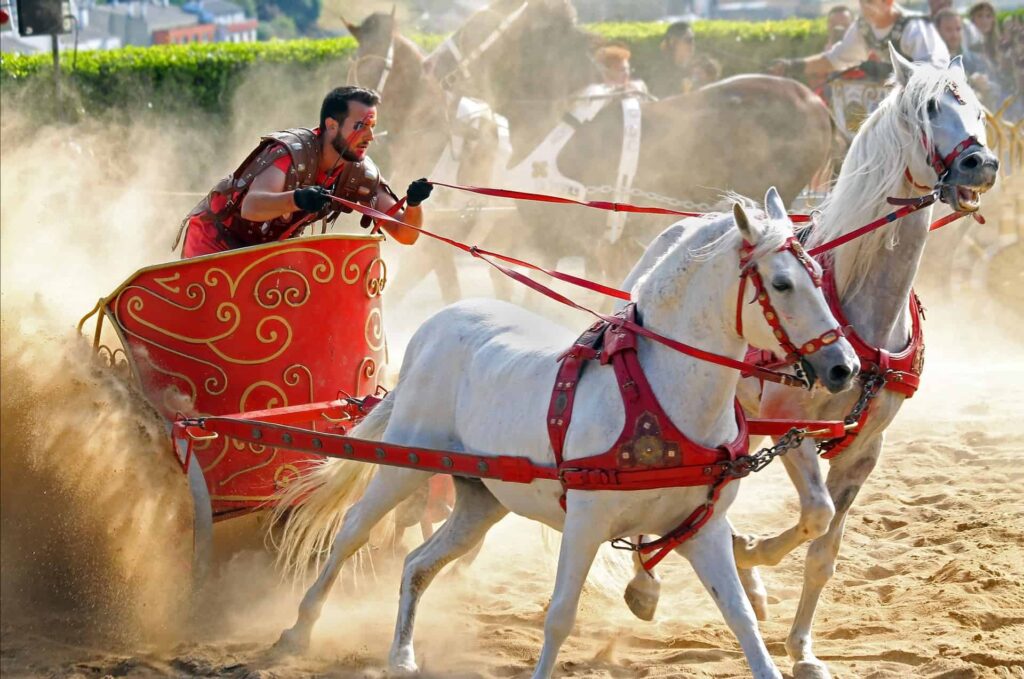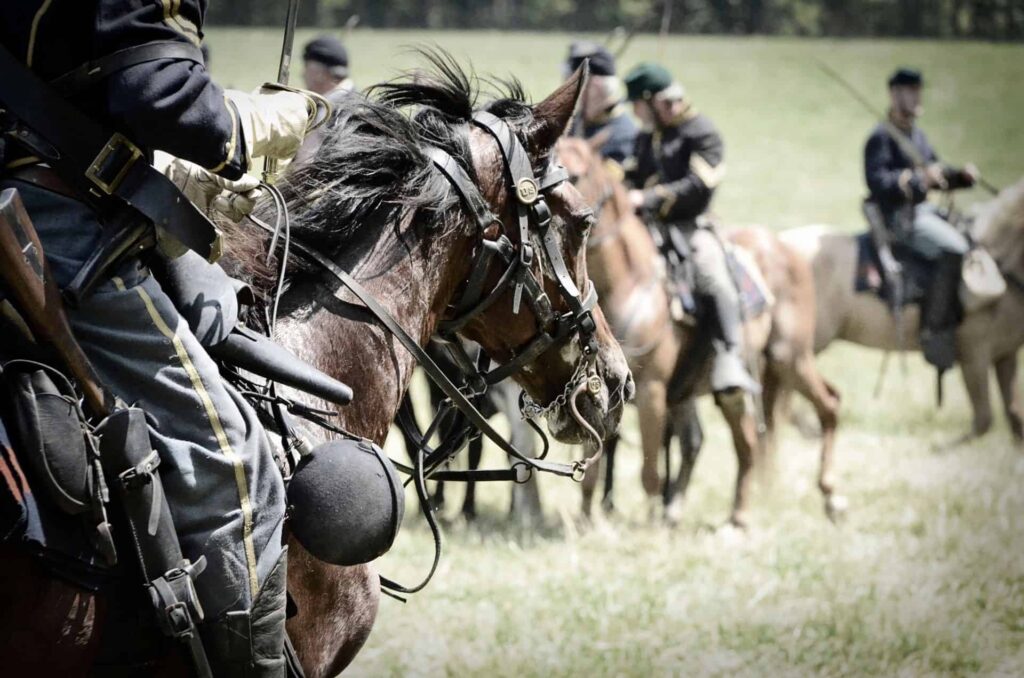Horses in WW1 played a crucial role in various aspects of the conflict. From cavalry charges to transporting supplies and providing logistical support, horses were a vital presence on the battlefields. Despite the advancement of mechanized warfare, these noble animals continued to contribute significantly to the war effort, assisting soldiers in overcoming numerous challenges.
As the war unfolded, nations involved in the conflict established programs to oversee the procurement, training, and care of horses. Medical and veterinary services were developed to cater to the unique needs of these animals on both the front lines and behind the scenes. The roles played by horses were diverse, and their contributions spanned across different fronts and theaters of the war.
With the conclusion of the war, the legacy of horses in World War I had a lasting impact on military strategy, and the relationship between humans and horses underwent a profound transformation. While their use in future conflicts would diminish, the memory of their service and sacrifice in the First World War remains etched in history.
Key Takeaways
- Horses played vital roles in cavalry, transportation, and logistics during World War I.
- Nations developed specialized programs for horse procurement, training, and care during the conflict.
- The legacy of horses in the First World War had both lasting and transformative effects on military strategy and human-animal relations.
Horses In The Service
Types of Horses Used
During World War 1, a variety of horses were used for various purposes depending on their size, strength, and abilities. The main types of horses involved in the war included:
- Riding horses: These horses were primarily used for carrying officers and scouts. They needed to be fast, agile, and have good endurance.
- Cavalry horses: Cavalry horses were used in mounted combat by the cavalry units. They had to be strong, fast, and well-balanced for effective use in charges and battles.
- Ponies: Ponies were smaller and sturdier than other horses, making them suitable for transporting equipment and supplies over rough terrain.
- Draft horses: These were large, strong horses used for heavy work like pulling artillery and supply wagons.
Roles of Horses
Horses played a crucial role in World War 1 due to their versatility and reliability. Some of their roles included:
- Cavalry charges: Horses were used by cavalry units to conduct swift and powerful assaults against enemy positions.
- Reconnaissance: Scouts on horseback played a vital role in gathering intelligence about enemy movements and positions.
- Transport: Horses were used for transporting supplies, ammunition, and food to the front lines, as well as evacuating wounded soldiers from the battlefield.
- Artillery support: Draft horses were responsible for pulling heavy artillery guns to new positions, enabling more effective use of these powerful weapons in battle.
Care of Horses
Proper care of horses helped maintain their health and effectiveness during the war. Some of the ways horses were cared for included:
- Regular feeding: Horses were provided with sufficient food, including hay and oats, to maintain their strength and stamina.
- Water supply: Adequate water was made available to the horses to prevent dehydration, especially during long marches or hard work.
- Grooming: Grooming was important to maintain horses’ hygiene, avoid skin infections, and keep them comfortable. It also helped in maintaining a close bond between the horses and their handlers.
- Medical care: Horses injured or sick during the war received medical attention from veterinarians to ensure their swift recovery and return to service.
Challenges Faced

Terrain and Weather Impact
During World War 1, horses faced various challenges due to the harsh terrain and weather conditions. The muddy landscapes, particularly in the trenches, made it difficult for horses to navigate and carry supplies. Heavy rainfall further worsened the situation, turning the ground into a quagmire. Additionally, barbed wire posed a significant threat, as horses often became entangled and injured in the sharp fences while trying to maneuver through battlefields.
Disease and Starvation
Horses also struggled with disease and starvation during the war. Mange, a common skin disease caused by parasitic mites, led to severe discomfort and sometimes death. Moreover, the limited supply of food and resources resulted in starvation among horses. Feeding the vast number of horses was a constant challenge, and many did not receive sufficient sustenance to maintain their health and strength.
Artillery and Machine Guns
The introduction of modernized weaponry, such as artillery and machine guns, in World War 1 led to devastating consequences for horses. They were frequently exposed to artillery fire, which caused severe injuries and often resulted in death. In addition, gas warfare introduced another deadly element, as horses were just as susceptible to poisonous gas attacks as the soldiers. Protective gear like gas masks was eventually developed for the animals, but many still succumbed to the toxic effects of the chemicals.
In conclusion, horses in World War 1 faced a multitude of challenges, ranging from harsh terrain and weather conditions to disease, starvation, and exposure to modern weaponry. These factors contributed to the high mortality rate among horses during the conflict, highlighting their vulnerability in the face of war.
Cavalry In Warfare
Cavalry Charges
Cavalry charges played a significant role in World War 1, as they were a key element in the battle strategies of various armies. Despite the increasing use of mechanized warfare, horses remained crucial for their mobility and ability to traverse difficult terrain. Cavalry units would often charge at the enemy lines or seek to exploit vulnerabilities in their defense. This tactic had varying degrees of success, depending on factors such as terrain, enemy preparedness, and the skill of the cavalrymen themselves.
One of the most famous cavalry charges in World War 1 was the charge of the Australian Light Horse at Beersheba in 1917. As a part of the larger Battle of Beersheba, this charge was a crucial turning point, leading to the capture of the strategically vital city in British-held Palestine. The Australian Light Horse finished the First World War as full sword-carrying cavalry, making them a highly effective force in skirmishes and raids throughout the region (source).
Cavalry Units and Forces
Different countries employed various cavalry units and forces during the war. These units were typically composed of light and heavy cavalry, each serving a unique purpose on the battlefield. Light cavalry units, such as the Australian Light Horse or the British Lancers, were employed for reconnaissance and to engage the enemy quickly. Heavy cavalry, which included the renowned French Cuirassiers and German Uhlans, was used for breaking through enemy lines and engaging in fierce combat.
A prime example of the effective use of cavalry during World War 1 was seen on the Eastern Front. Here, large open spaces and relatively less trench warfare allowed for more fluid movements by both light and heavy cavalry. Some notable cavalry battles on this front include the Battle of Łówicz in 1914, involving the Russian and German cavalry, as well as the Brusilov Offensive in 1916, where the Russian cavalry played a significant role in the success of the offensive (source).
On the Western Front, however, the entrenchment nature of warfare became a challenge for the effective use of cavalry. Despite these limitations, cavalry units often found useful roles in reconnaissance and patrolling the contested territory.
Cavalry continued to play an important role in World War 1. The tactics and effectiveness of cavalry charges varied depending on factors like terrain and strategy, while specialized cavalry units served unique battlefield functions. Even amidst the growing dominance of mechanized warfare, the horse remained a significant element of many nations’ military strategies.
Supply and Logistic Support

Transportation of Horses
During World War I, horses played a significant role in the transportation of supplies and troops. They were vital for the success of the Allied and Central Powers, as trains and motor vehicles were still limited and often unreliable. To transport horses to the battlefield, they were shipped across the seas or moved by railheads when possible. Additionally, supply wagons were often horse-drawn which helped bridge the gap from railheads to the front lines.
Horse artillery also played a crucial role in the movement of artillery pieces and other heavy equipment. Their strength allowed them to maneuver through rough terrain and over long distances. They were pivotal in supplying coal to the frontlines, as it was the primary source of fuel for steam locomotives, and for maintaining the efficiency of the supply trains.
Supply Line Management
Managing supply lines during World War I was a complex and daunting task. Efficient supply line management was crucial for providing necessary resources like food, ammunition, and medical supplies to soldiers. Horses and supply wagons played a crucial role in transporting these supplies from the railheads to the various trenches and battlefronts.
Motor vehicles, such as trucks, were still a relatively new technology at the time, and the armies’ reliance on horses was necessary for maintaining the flow of supplies. The vast distances that needed to be covered, coupled with the harsh conditions and inhospitable terrain, increased the importance of horse-drawn supply wagons.
To ensure the effective delivery of supplies, armies had to continuously refine their logistic support strategies. Ships were used to transport massive amounts of supplies to the various ports across Europe, followed by rail transportation to the battlefields. Railheads were strategically located near conflict zones to facilitate easier movement of materials to the soldiers on the ground.
The use of horses in World War I was fundamental for the success of the various armed forces. Their contributions to transportation and supply line management were invaluable and played a pivotal role in the outcome of the war.
Medical and Veterinary Care
Wound and Disease Treatment
During World War I, the role of the Army Veterinary Corps was crucial in providing medical assistance and care to horses. Facing numerous challenges such as wounds from battlefields and various diseases, the vets had to apply their skills in the treatment and recovery of these animals. One study accounts for the diary of a World War One veterinary officer who expressed concern for the health of horses and their potential mortality.
Horses were vulnerable to several health issues, such as:
- Respiratory infections
- Gastrointestinal disorders
- Skin diseases
- Lameness
In addition to treating wounds sustained in combat, veterinary officers in the field provided crucial therapies for these ailments in order to maintain the overall health and effectiveness of the horses in their service.
Veterinary Hospitals
To further address the medical needs of horses during World War I, the establishment of veterinary hospitals played a role in tending to the often severe injuries and illnesses of these animals. Wounded and sick horses were transported from the front lines to the hospitals, where they received comprehensive medical care from skilled veterinary professionals.
These facilities served multiple purposes, including:
- Providing a space for specialized treatment and care
- Allowing for the proper rehabilitation and recovery of the horses
- Functioning as a centralized location for veterinary officers to collaborate and report on the health status of the animals
The Italian Army Veterinary Service in World War I, for example, deployed veterinary officers to various fighting units for extensive techniques such as first aid, shoeing, and overseeing food supplies for the animals.
In conclusion, the medical and veterinary care provided during World War I was crucial in ensuring the well-being of horses, their ongoing contributions to the war effort, and their eventual recovery post-injury or illness.
Horses Across Various Fronts
Western Front
During World War I, horses played a crucial role in the transportation of supplies, troops, and artillery on the Western Front. They were used for logistics and allowed armies to mobilize quickly across the vast network of trenches. Despite the introduction of motorized vehicles, horses remained vital due to their ability to navigate the often treacherous and muddy terrain.
Eastern Front
The Eastern Front saw a larger presence of cavalry units compared to the Western Front. Horses were used for reconnaissance, shock tactics, and harrying enemy forces. The more open nature of the Eastern Front, with fewer trenches and a generally less congested battlefield, allowed for cavalry to be more effective in skirmishes and raids.
African Front
In East Africa, horses were primarily used to transport troops and supplies during the conflict between the British Empire and Germany’s colonial forces. Their role was somewhat limited in the African Front due to the harsh climate, the prevalence of diseases affecting both horses and humans, and the lack of infrastructure which made transportation difficult. Nevertheless, horses still managed to contribute significantly to the mobility of troops in this theater of the war.
Palestine Campaigns
During the Palestine Campaigns, horses played an important role in the British and Ottoman military operations. They were mainly used for transportation, reconnaissance, and cavalry charges. In the Sinai and Palestine Campaigns, horses allowed for faster communication and the rapid deployment of troops across the vast desert landscapes. This was vital to maintaining pressure on the Ottoman Empire and ultimately contributed to the Allied victory in the region.
Role of Nations

British Cavalry
During World War 1, the British Cavalry played a significant role on the Western Front, particularly during the early stages of the war. The British cavalry units were known for their mobility and ability to launch quick attacks against enemy positions. They were mainly used for reconnaissance and maintaining communication lines between the front lines and the command units. The British cavalry transitioned over time to engage in more traditional infantry warfare, especially with the advent of trench warfare.
American Cavalry
American cavalry in World War 1 was mostly limited in number and primarily used for training purposes and border security. When the United States entered the war in 1917, American cavalry units were transformed into infantry units to better align with the trench warfare that had come to define the conflict. Their primary roles included security, reconnaissance, and communication, similar to their British counterparts. Though the American cavalry had a lesser role than the other nations, they contributed to the overall success of the Allied forces.
Australian Cavalry
The Australian cavalry played an essential role in the Middle Eastern theatre of operations during World War 1. The Australian Light Horse infantry was noted for their flexibility, speed, and ability to quickly engage the enemy. In particular, they were successful in battles such as the Battle of Romani and the Battle of Beersheba. The Australian Light Horse combined infantry and cavalry roles, riding to the battle and then dismounting to fight. This unique tactic enabled them to have an impact in the less trench-focused Middle East.
Canadian Cavalry
The Canadian Cavalry Brigade was an important addition to the British forces during World War 1. Under the command of British Major General Seely, the Canadian cavalry played a crucial role in supporting the infantry during the Battle of Moreuil Wood. The successful coordinated attack by the Canadian Cavalry Brigade on the German trench lines at Moreuil Wood was a significant factor in the eventual halt of the German Spring Offensive in 1918. The Canadian cavalry was effective in conducting reconnaissance, fighting in the trenches, and facilitating communication between the front lines and command units.
Post-War Legacy
Remembrance and Memorials
The legacy of horses in World War 1 has been remembered and commemorated in various forms, both in Britain and other countries involved in the conflict. The Remount Department, responsible for procuring and training horses for military use, played a significant role in the war. Following the war, their efforts were acknowledged and appreciated by the public.
One of the most prominent horse-related memorials is the Animals in War Memorial in London, which was unveiled in 2004 to commemorate all animals, including horses, that served alongside British and allied forces in wars and conflicts. This memorial pays tribute to the millions of animals that lost their lives and emphasizes the important roles they played in various wars.
A more specific tribute to horses can be found at the Old War Horse Memorial Hospital in Great Britain. This hospital cared for horses that had returned from the battlegrounds, understanding the value of these animals and their contributions to the war.
Cultural Influence
Horses, both individual and in general, have been immortalized in various artistic and literary works, which helped shaping the cultural memory of World War 1. For instance, British artist Alfred Munnings created several paintings portraying war horses, capturing their strength, resilience, and loyalty during the war.
In literature, Michael Morpurgo’s novel, “War Horse,” tells the story of a horse named Joey and the hardships he faced during the war, from both the perspective of the horse and the people that encountered him. The novel became an acclaimed stage play and Steven Spielberg film, further emphasizing the horses’ significance in World War 1.
Another notable example is Warrior, a famous war horse known for his bravery and devotion to his rider, General Jack Seely. Warrior’s story has been documented in books and television programs, contributing to the cultural memory and legacy of horses in World War 1.
In conclusion, the post-war legacy of horses in World War 1 showcases their importance and the deep bond shared between animals and humans in times of conflict. Through memorials, art, and literature, the sacrifices and contributions of these loyal animals continue to be remembered and honored by future generations.
Related: Horse Warfare
Frequently Asked Questions
What was the primary role of horses in WW1?
During World War 1, horses played a crucial role in transportation and communication between the front lines and headquarters. They were primarily used for pulling heavy artillery, transporting supplies, and carrying wounded soldiers from the battlefield. Additionally, cavalry units utilized horses for reconnaissance and combat missions.
How many horses were used during WW1?
It is estimated that over 8 million horses were used by all parties involved throughout the duration of World War 1. The demand for these animals was incredibly high, with each side deploying thousands of horses every month for various purposes.
Which countries deployed horses in WW1?
All major countries that participated in World War 1, including the United States, Great Britain, France, Germany, and Russia, deployed horses for military purposes. Each country had its own breed of horses selected based on their strength, endurance, and suitability for specific tasks.
What were some challenges faced by horses in WW1?
Horses faced numerous challenges during the war, such as harsh weather conditions, disease, malnourishment, and injuries sustained on the battlefield. Many horses perished due to the horrific conditions, and thousands had to be euthanized due to severe injuries. Additionally, they were exposed to the same dangers as soldiers, such as gas attacks and shellfire, leading to high casualty rates.
How were horses trained for WW1?
Horses were trained extensively before being deployed in the war. They were taught to be obedient, strong, and resilient in the face of noise and chaos. Military trainers would expose the horses to gunfire, shouting, and other loud noises to desensitize them. They would also train the horses to carry heavy loads and travel long distances without rest in preparation for their wartime roles.
What is the legacy of WW1 war horses?
The legacy of World War 1 war horses is significant and enduring. Their bravery and loyalty have been immortalized in numerous books, films, and artworks, like Steven Spielberg’s film War Horse. Beyond their roles in the war, the loss of so many horses during WW1 also led to a decline in their use for civilian purposes, as automobiles and other forms of transportation began to replace horse-powered conveyances.
Last Updated on October 14, 2023 by Nate Dewsbury



